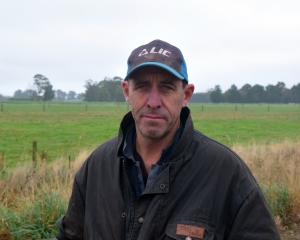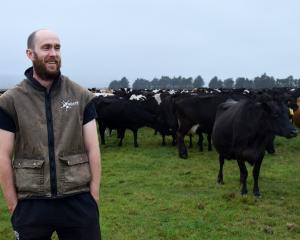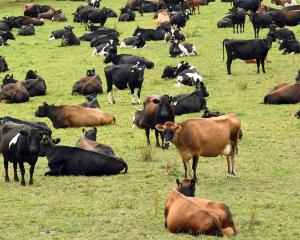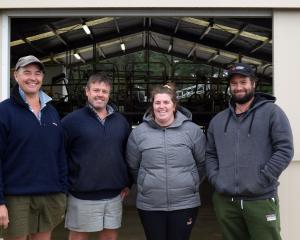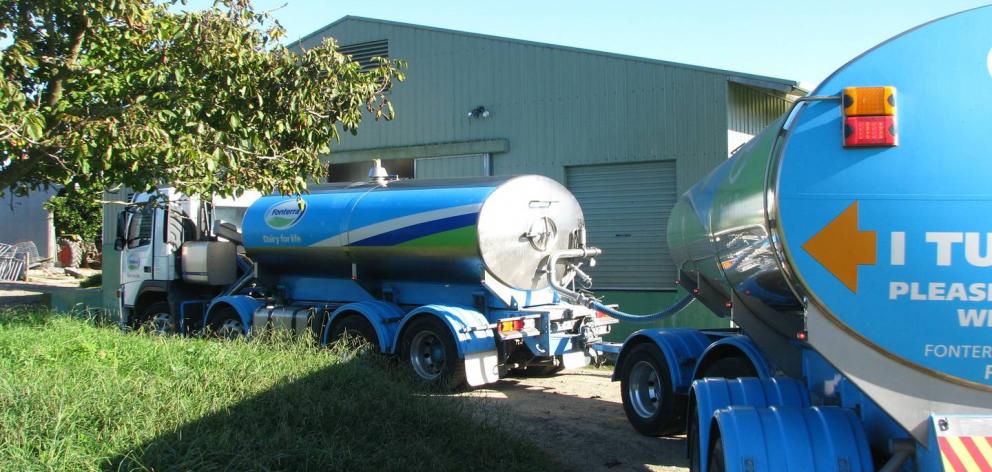
Fonterra's "reported" net profit came to $599m for the year, compared to $659m in 2020, while its "normalised" profit after tax came to $588m, up $190m.
The co-op announced a dividend of 15c a share, taking the total to 20c, compared with last year's total of just 5c.
On a normalised basis, Fonterra's earnings per share came to 34 cents, the top end of its guidance of 25 to 35 cents.
The co-op settled on a $7.54 per kg of milksolids milk price for the season just finished, taking the total payout for 2020/21 to $7.74/kg
For the current season, Fonterra's forecast has remained at $7.25 - $8.75 per kgMS, with a midpoint of $8 per kgMS.
Chief executive Miles Hurrell said the last three years had been about resetting the business.
"We've stuck to our strategy of maximising the value of our New Zealand milk, moved to a customer-led operating model and strengthened our balance sheet," he said.
Fonterra also presented a revised capital structure proposal that it will discuss with farmers over the coming weeks before deciding whether to proceed to a shareholder vote.
The "Flexible Shareholding" structure is a progression on the preferred option put forward at the start of the consultation process in May, but with key changes based on farmer feedback and further expert advice.
The changes are:
New minimum shareholding requirement - set at 33 per cent of milk supply (around 1 share per 3 kgMS), compared to the current compulsory requirement of 1 share per 1 kgMS. This is intended to strike a balance between providing a meaningful level of flexibility for those who need it, which is critical to maintaining a sustainable milk supply, while ensuring all farmers having some capital-backed supply.
New maximum shareholding requirement - set at 4x milk supply, compared to the current 2x milk supply. This is intended to strike a balance between supporting liquidity in the farmer-only market – by ensuring more capacity for farmers to buy shares from those who want to sell – while avoiding significant concentration of ownership.
More types of farmers could buy shares - including sharemilkers, contract milkers and farm lessors. This is intended to recognise their connection to Fonterra, provide a pathway for future farmer owners and increase the number of potential participants in the farmer-only market by around 4,000 to support liquidity.
Exit provisions - extended and entry provisions would be eased. Existing shareholders would have up to 15 seasons initially to exit, reducing annually to 10 seasons, which would also support liquidity and give these farmers greater choice about how long they retain an investment in the Co-operative. Meanwhile any new entrants would have up to six seasons to achieve the 33% minimum shareholding requirement. This compares to a standard three seasons for both entry and exit under the current structure.
The Fonterra Shareholders' Fund (the Fund) - capped to protect farmer ownership and control. If greater flexibility was provided without making any other changes to the current structure, the thresholds relating to the size of the Fund could be exceeded relatively quickly. That's because farmers would be able to hold fewer shares and non-farmers would be able to invest more through the Fund.
The Fonterra Shareholders' Market (FSM) - continue to operate as a farmer-only market, but shares would no longer be able to be exchanged into units in the Fund. As communicated in May, this means the share price may trade at a discount to the unit price, referred to as a restricted market discount. But aside from this initial adjustment, the farmer-only market should enable the Co-operative's share price to better reflect the higher costs of capital many farmers have compared to external investors with more diversified investment portfolios.
Additional measures to support liquidity - in the farmer-only market recognising there may be lower levels of trading, so the share price could move more on small volumes. The Co-operative has sourced expert advice to determine the measures it would take to support liquidity. This includes allocating up to $300 million to support liquidity as farmers transition to the proposed structure, through an on-market share buy-back programme and other tools.
Fonterra Chairman Peter McBride says changing the Co-operative's capital structure is a critical decision and not something the Board and senior management are taking lightly.
"We are confident that this proposal would support the sustainable supply of New Zealand milk that our long-term strategy relies on. One enables the other, and together they give our Co-operative the potential to deliver the competitive returns that will continue to support our families' livelihoods from this generation to the next.
"Our future success relies on our ability to maintain a sustainable milk supply in an increasingly competitive environment, and one that is rapidly changing due to factors such as environmental pressures, new regulations and alternative land uses.
"We see total New Zealand milk supply as likely to decline, and flat at best. Our share of that decline depends on the actions we take with our capital structure, performance, productivity and sustainability.
"If we do nothing, we are likely to see around 12-20 per cent decline by 2030 based on the scenarios we have modelled."
The proposed changes would also protect against the uncertain and recurring risk to the
co-operative's balance sheet, he added.


